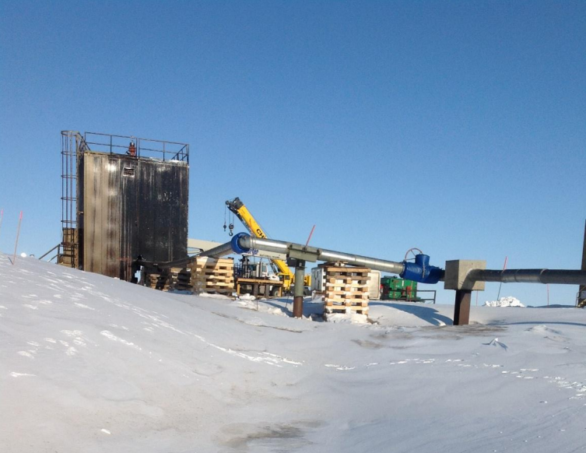
BP will likely plug and abandon 13 wells on the North Slope following an accident earlier this year.
That’s according to Cathy Foerster of the Alaska Oil and Gas Conservation Commission. The commission met with BP representatives Thursday for an update on the April incident, during which one of the company’s older wells spewed oil and gas for several days before it could be plugged.
Several months later, BP determined 14 other wells were at risk, five of which were producing oil. Foerster said it’s likely all but one will be shut down for good.
That’s a small number compared to Prudhoe Bay’s roughly 1,800 wells. But state regulators are still making sure BP shares its investigation with other oil companies.
“Anybody that’s got an old well on the North Slope needs to know what the results of their investigation are and look for implications in their fields,” Foerster said.
BP thinks the accident was caused by thawing permafrost deep below the surface, which put uneven stress on the well. Eventually, the well gave out, rising several feet out of the ground and colliding with the top of the well house.
BP hasn’t been calling the incident a “blowout.” Foerster said oil industry engineers wouldn’t call it that because there wasn’t a rig on the well. But, she said it was definitely an uncontrolled leak.
“If that’s how you define it, then yeah, it was a blowout. [But] if you define it in the black-and-white way that engineers tend to define things, no. So it’s semantics. You call it what you call it,” Foerster said. “But what it was was an uncontrolled release of hydrocarbons to the surface, and that’s not a good thing.”
This wasn’t BP’s only accident this year. Last week, Buzzfeed News released documents showing the company forced many employees to halt work for 12 days this month following a series of safety incidents.
Elizabeth Harball is a reporter with Alaska's Energy Desk, covering Alaska’s oil and gas industry and environmental policy. She is a contributor to the Energy Desk’s Midnight Oil podcast series. Before moving to Alaska in 2016, Harball worked at E&E News in Washington, D.C., where she covered federal and state climate change policy. Originally from Kalispell, Montana, Harball is a graduate of Columbia University Graduate School of Journalism.




